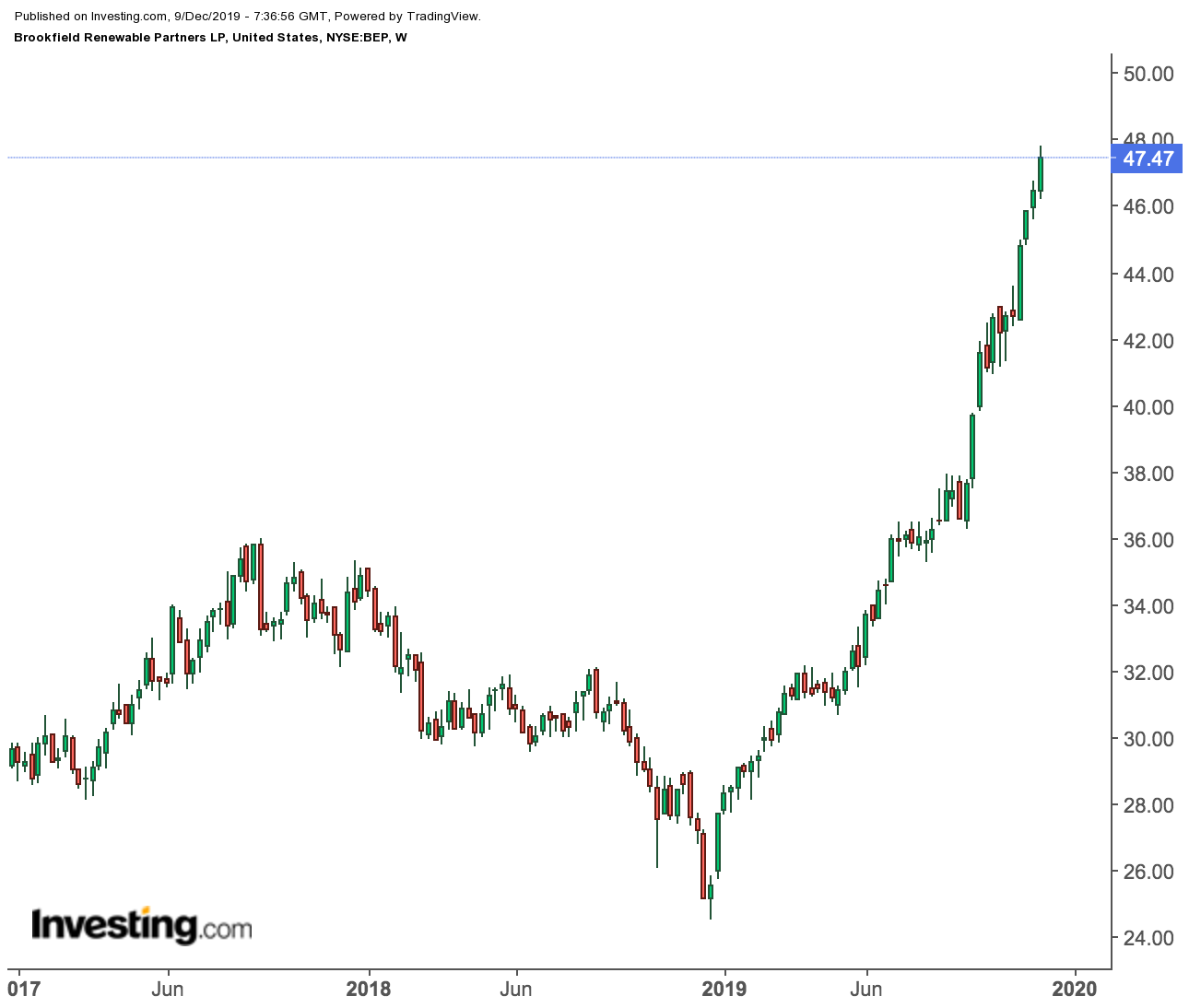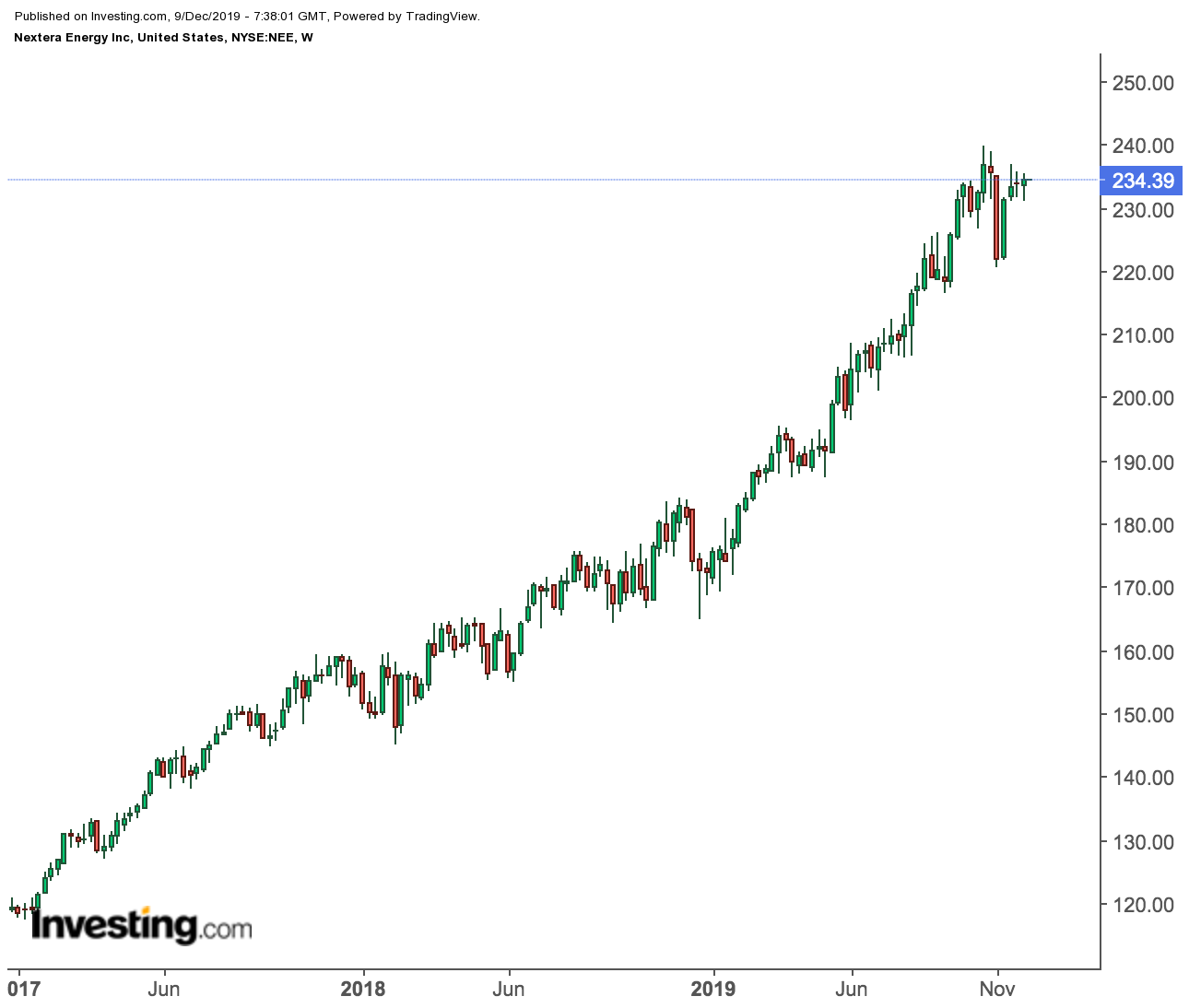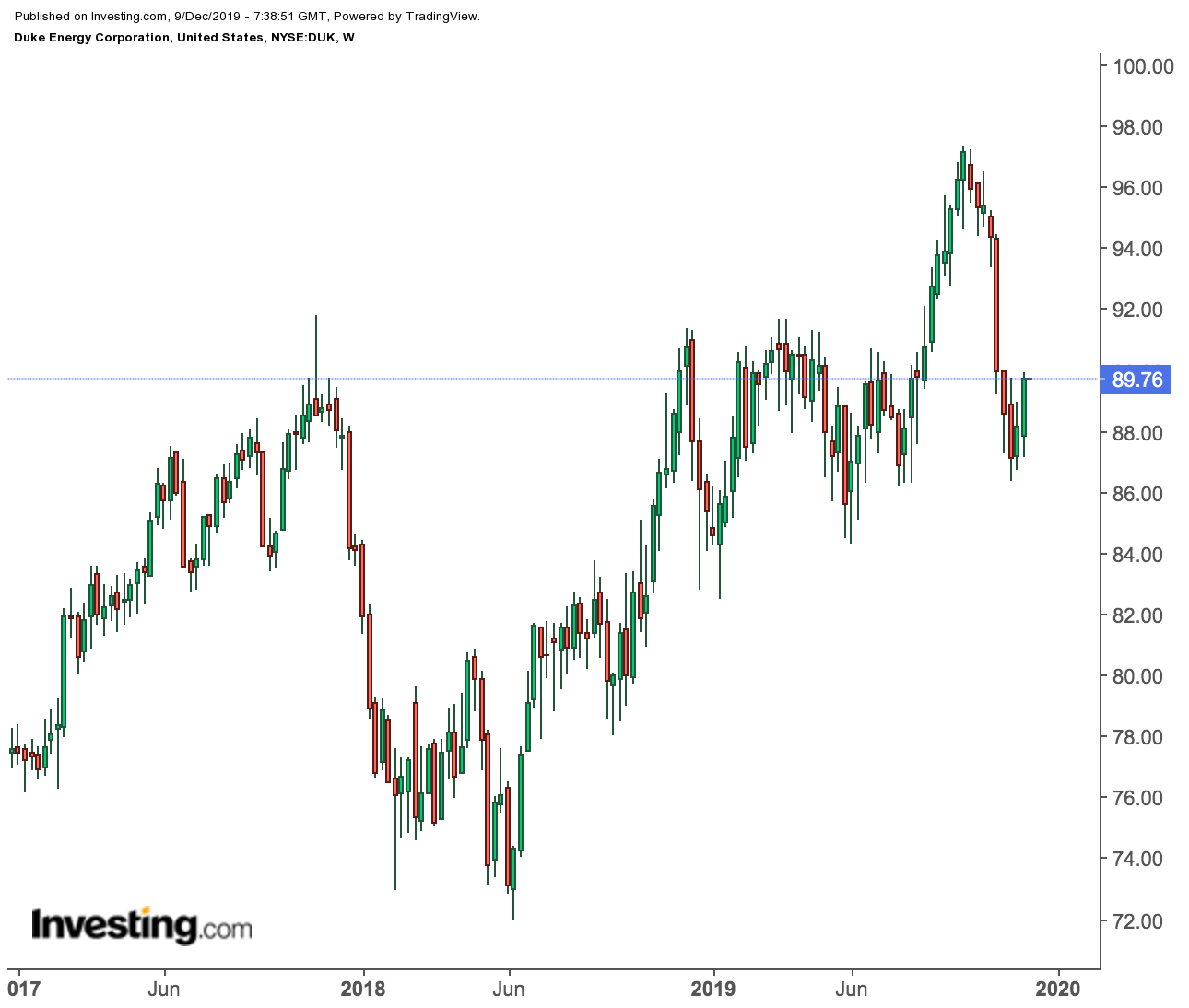Does it make sense to invest in traditional oil stocks when there is a clear shift to producing energy through clean sources, like wind and solar? The debate on that topic has been raging for almost a decade now, especially after the shale gas revolution in the U.S.
A recent insight on the subject came from the world’s biggest oil company, Saudi Aramco (SE:2222), which concluded its initial public offering (IPO) last week, valuing the company at $1.7 trillion. Global oil demand may peak within the next 20 years, according to an assessment included in the company’s prospectus.
In the offering document, Aramco used a forecast from industry consultant IHS Markit Ltd. that sees oil demand peaking around 2035. Under that assessment, demand growth for crude and other oil liquids will be “leveling off” at that time. In a chart included in the prospectus, the Saudi oil giant showed global oil demand falling between 2040 and 2045.
A second demand scenario in the prospectus assumes a faster transition away from fossil fuels. In that case, oil demand is expected to peak in the late 2020s, just a few months away. Aramco acknowledged in the document that climate change policies “may reduce global demand for hydrocarbons and propel a shift to lower carbon-intensity fossil fuels such as gas or alternative energy sources.”
That kind of assessment from the world’s leading source of oil clearly makes a strong case for investing in companies that are at the forefront of the clean energy revolution. Here are our three favorite stocks from this segment of the industry that long-term investors would do well to stash in their portfolios:
1. Brookfield Renewable Partners
Among the clean energy producers, we like Bermuda-based Brookfield Renewable Partners (NYSE:BEP) because of its dominant position in the field and its diversified asset base.
Recent statistics bolster the case for BEP. The International Energy Agency sees continued strong growth in renewables through 2022, with renewable electricity capacity forecast to expand by over 920 GW — an increase of 43%.
Brookfield's diversity — it operates hydroelectric, wind, solar and biomass facilities among its other renewables operations — and depth, with 17,400 MW of capacity and 876 facilities in North America, South America, Europe, and Asia, give the company a broad array of services.
The partnership recently declared a quarterly cash distribution of $0.515 per unit, which is growing at a compound annual growth rate (CAGR) of around 6%. According to the company’s latest earnings report, Brookfield Renewable Partners generated $590 million in funds from operations (FFO) in the first nine months of 2019, showing a 25.5% year-over-year jump.
Going forward, BEP expects its FFO per unit to keep rising at a CAGR above 10% through 2024, as it acquires more companies and adds more capacity to its clean power. As per its latest earnings report, Brookfield Renewable is targeting a sustainable distribution with increases aimed at 5-9% annually, on average.
Trading at $47.47 at Friday's close after surging 83% this year, BEP stock has proved to be a great bet for its investors. But we still like its annual dividend of $2.06, yielding 5.8%, and its potential for future growth.
2. Nextera Energy
We like utilities for the long term for one simple reason: they invest billions of dollars to build assets which generate solid income for their investors. As long as customers continue to pay their utility bills, the cash will keep rolling in.
In this space, we particularly like Nextera Energy (NYSE:NEE), the Florida-based utility that has scaled up by providing clean energy, which will be hard for competitors to match. Nextera is the largest U.S. provider of renewable energy, generating electricity from the wind and sun. It also operates a large natural gas pipeline business as well as a growing energy storage operation.
The big difference between Nextera and other traditional utility companies is that its growth wasn’t funded by a massive injection of debt. Instead, the company very smartly used the government subsidies and tax breaks offered to clean power producers. It mostly sells the output to utilities, many of which must procure power from green sources to meet state mandates.
The utility plans to invest $40 billion on its development projects through the end of next year. This should help fuel growth, especially at a time when the renewable market opportunity is huge and the company has already scaled impressively. Half the power-generating capacity added in the U.S. in 2017 was wind and solar, according to the Energy Information Administration, versus 29% in 2010.
Nextera is expanding beyond its traditional utility customers to build wind farms and solar parks directly for large corporations, such as Google parent Alphabet (NASDAQ:GOOGL), some of which want to run facilities with green energy for financial and public-relations purposes, the Wall Street Journal reported in June.
This mix of clean energy and energy storage businesses has rewarded investors handsomely. Shares closed Friday at $234.39, following their 127% jump in the past five years. With a dividend yield of 2.13%, NextEra pays an annual dividend of $5 a share. The company plans to raise that by between 12% and 14% through the end of 2020.
3. Duke Energy
Duke Energy (NYSE:DUK) is another attractive option if you plan to boost your portfolio with a reliable utility stock which is expanding its clean energy operations. Following a major restructuring of its assets in recent years, the utility sold off its carbon-based power assets and foreign operations, buying a natural gas utility and expanding its reach in renewable power.
Owning Duke shares makes sense for long-term investors because the company's regulated business models make its cash flows predictable, meaning there's little risk of negative surprises. Duke has a $37 billion development plan to run until 2022 to support the company’s inflation-beating dividend growth.
Through its diversified power, gas and storage businesses, Duke plans to deliver between 4% and 6% annual dividend growth. The stock closed Friday's session at $89.76 after falling about 8% from its five-year high reached in early October, offering a good entry point to investors who will get more yield, now 4.2%, from the annual dividend of $3.78.
Bottom Line
Investing in clean energy stocks, in our view, is a safe bet if you pick the right stock with the intention to remain invested. As the shift away from traditional energy sources continues, these companies will gain more prominence in the energy mix and could become acquisition targets for established oil giants seeking more relevance in the rapidly changing environment.
